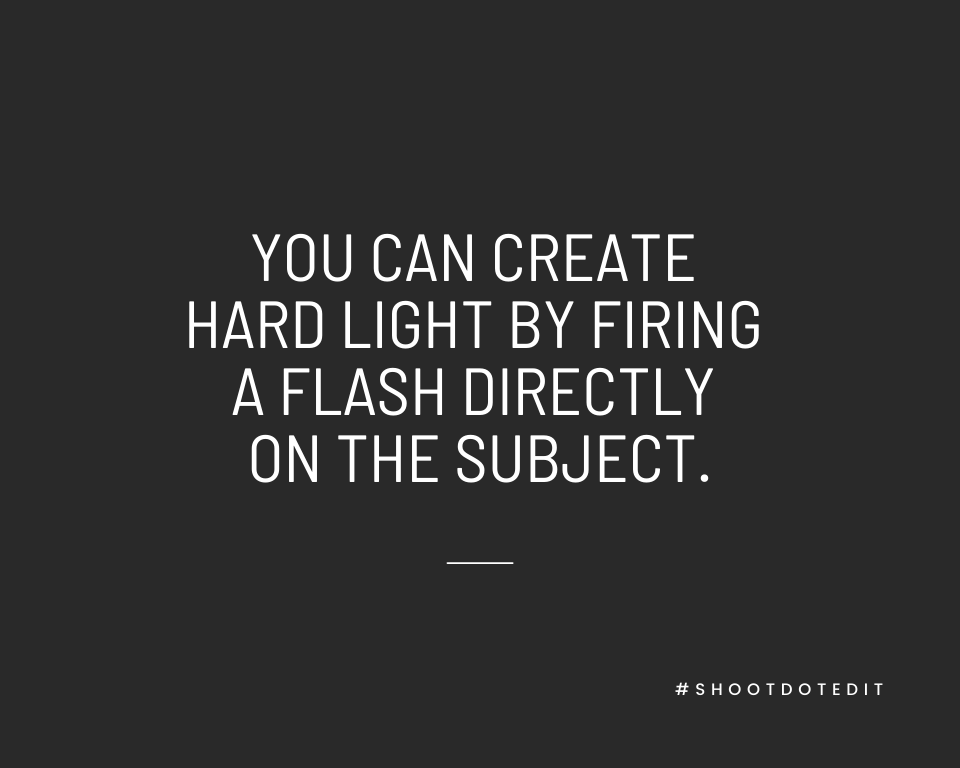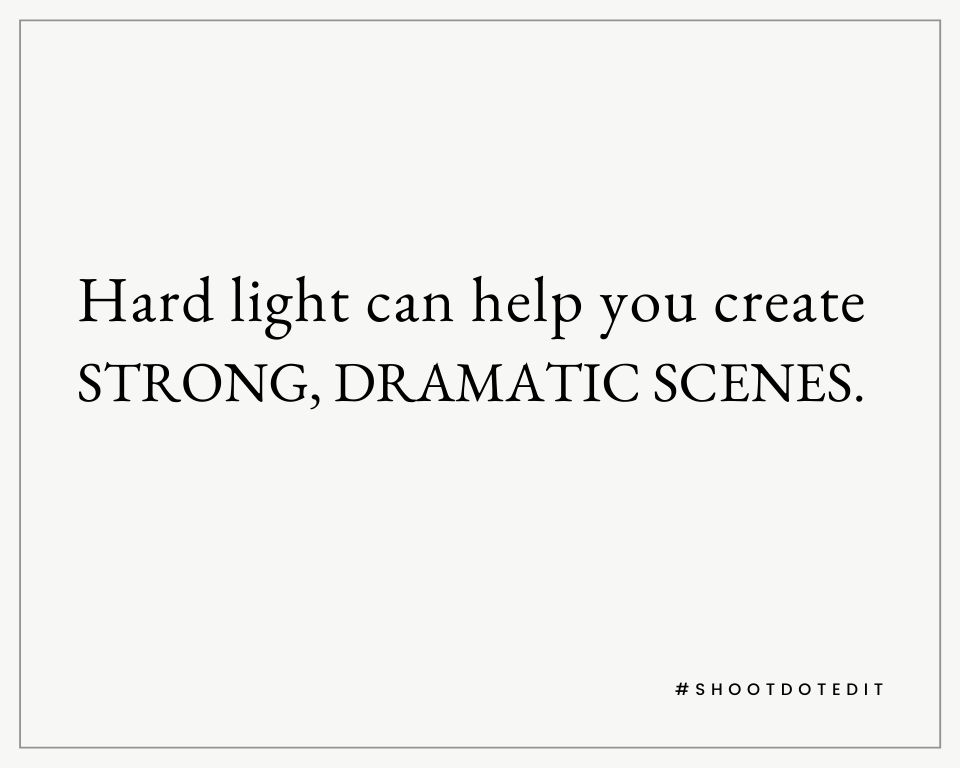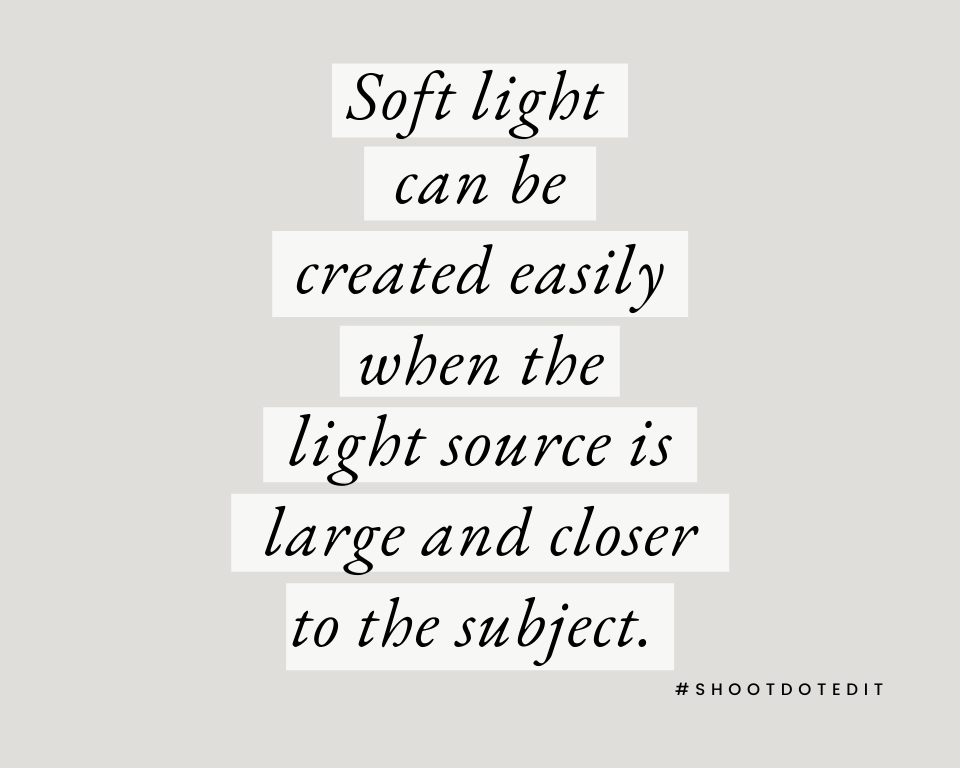
What is Hard Light?

Hard light leads to immediate and sharp transitions from light to shadow in a scene, thus creating harsh shadows. The edges of the shadow are very distinct and well defined, and there is a substantial difference between the darkest and the brightest areas of the image. This usually happens when you fire an on/off-camera flash directly on the subject or when the sun is overhead during midday. So you can create hard light both naturally and artificially. All you need is a light source that is relatively smaller and at a distance from the subject.
The Pros and Cons of Using Hard Light

Owing to the noticeable difference created by a hard light, it is one of the most preferred choices when it comes to creating and lighting strong, dramatic scenes. It also helps to add a hint of mystery and introduce a sense of drama or seriousness in photography, whenever required. In addition to that, since it forms well-defined edges and shapes, it could also be used to create some unique shadow patterns, especially if you are working in monochrome, something that wedding photographers often tend to play with while photographing moody wedding portraits. It might not be the most preferred light for general portraits, but if your aim is to play with light and capture something different, it could help you achieve that goal.
However, one of the downsides of using hard light is that since it creates stronger shadows and sharp transitions, it could even highlight the flaws in an image by adding depth and dimension to the scene. While photographing portraits, this could easily draw attention to skin imperfections – the opposite of what often most portrait photographers intend. Hard light is known to accentuate the details, textures, and edges of a subject and add to its complexity. However, the placement of the light is key; else, you might end up losing some interesting details.
Suggested Read: The Art Of Moody Wedding Photography: An Overview
What is Soft Light?

Soft light allows a gradual and even transition from light to dark in a scene. So the difference between the darkest and the lightest areas in the image is not stark and the edges are often soft. This type of light creates a very flattering and gentle effect. Soft light can be created easily when the light source is large and closer to the subject. In artificial lighting, you can create it by using modifiers and diffusers every time you fire a flash. This can be done with ease using umbrellas, softboxes, and diffusion gels. When using natural light, you can achieve this type of lighting when the sun is at a lower angle instead of being overhead. The time before sunset and sunrise, therefore, provides natural softer light. Note that sometimes, clouds can act as natural diffusers.
The Pros and Cons of Using Soft Light
There are many pros of using soft light. The most important plus point is that it gives your subject a softer, flattering look, therefore, smoothening the blemishes. No wonder it is used a lot in wedding and portrait photography. Soft light helps you radiate warmth or add neutrality to the scene, or portray the delicacy or innocence of a particular subject. Due to its many benefits, it covers a much wider spectrum of photography styles where you can use it.
However, if you are looking to intensify drama or mystery in your images, soft light might not be the most appropriate tool to achieve that. The same goes for when you are building contrast and want to add a distinctive difference between light and shade. So if you are working on highlighting the tension in a scene or bringing focus to hard shadows, hard light is likely the better choice.
Suggested Read: Shooting With Backlight: A Step-By-Step Photography Guide
Hard Light vs Soft Light: Which One to Choose?

Both hard light and soft light have their own set of advantages and disadvantages. However, when it comes to wedding photography, many photographers prefer to work with soft lighting. Mainly because oftentimes, the end goal is to achieve a light and airy effect or hide skin imperfections. That being said, harsh light too can easily work in your favor if you are going for the moody, dramatic, and noir look. To find out which one better works for you, ask yourself what you want as a final effect. Are you looking to create stronger shadows and well-defined contrasts, or are you aiming for a softer tone for your subject?
Further Read: Flash Photography Tips: A Brief Intro To Artificial Lighting
At ShootDotEdit, we strive to help you dedicate more time to doing things that you love. And to help free up your time, we offer professional photo editing services that match your style. To learn more about how we can help your wedding photography business, check out our pricing plans.


Leave a comment